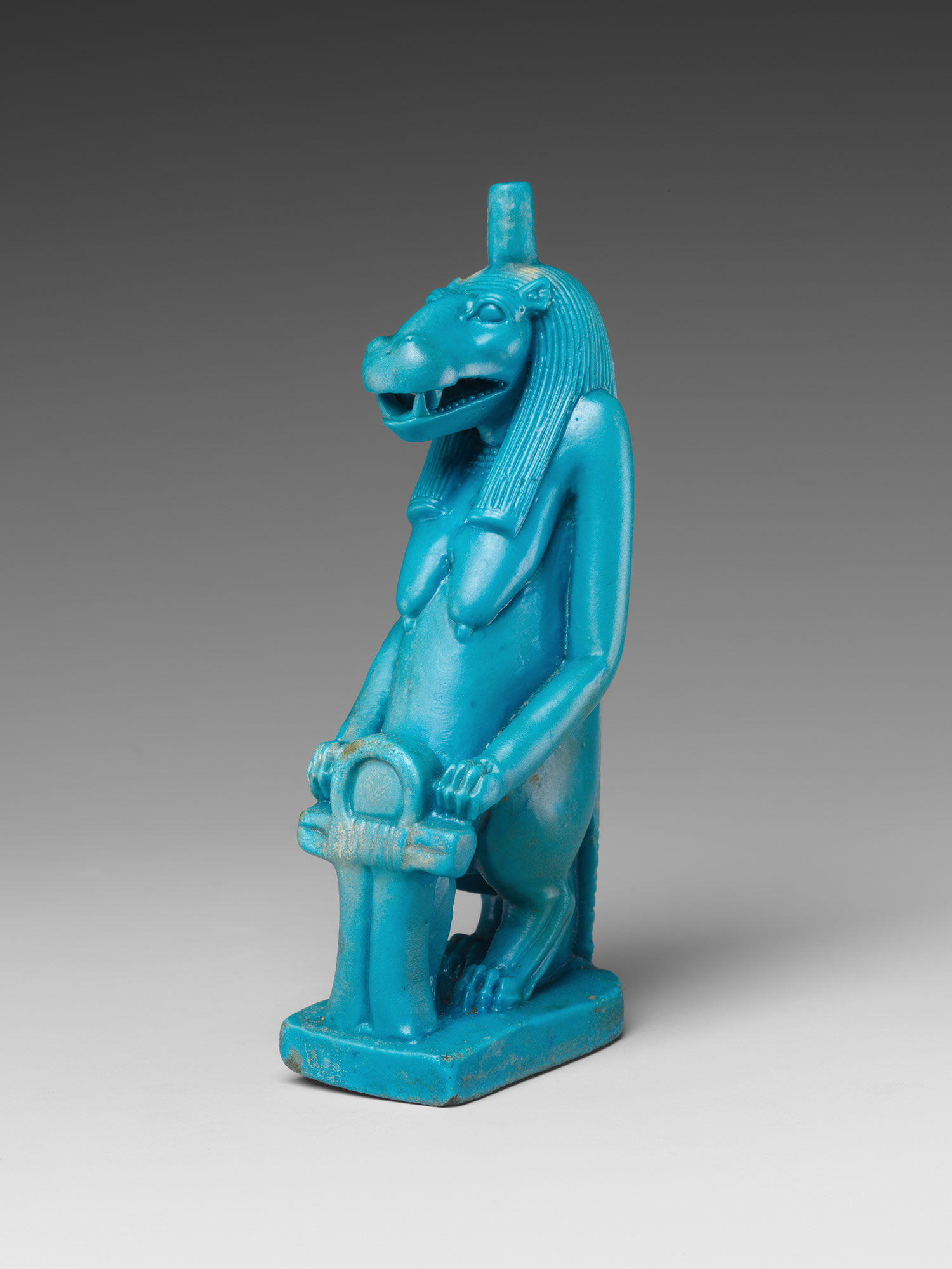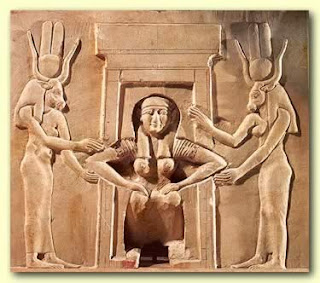Monday, July 6th, 2009
Taweret, Egyptian Childbirth, and LOST
 It’s no secret that I love the TV show LOST. During the past couple seasons, ruins of a four-toed statue have been shown on the LOST island, but a full depiction of the mysterious statue was not shown until last season – and it can be deduced that the original statue on the island is a depiction of Taweret, the Egyptian goddess.
It’s no secret that I love the TV show LOST. During the past couple seasons, ruins of a four-toed statue have been shown on the LOST island, but a full depiction of the mysterious statue was not shown until last season – and it can be deduced that the original statue on the island is a depiction of Taweret, the Egyptian goddess.
I know that I just barely did a post on ancient female fertility figurines, but I’m going to continue in this vein and talk about Taweret statues too. Taweret is the goddess who protects women who are pregnant or in childbirth. (If you watch LOST, you can see how the destruction of this statue ties into the problems women experience with pregnancy on the island.) The figurine on the left (assumed to be Taweret) is from the Ptolemaic Period (ca. 332-30 BC).1 The combination of human, crocodile, lion and hippopotamus features create a fearsome combination – Taweret was supposed to scare off demons and other deadly creatures that posed a threat to the mother and baby during childbirth.
Egyptian women also wore Taweret amulets to protect them during childbirth. I particularly like this one.
 And sorry if you don’t like depictions of childbirth, but I had to include this interesting relief from the Temple of Hathor at Dendera (ca. 304-30 BC; Egyptian Museum, Cairo). This relief shows a squatting woman in childbirth (using a birth stool), while being assisted by two goddesses (possibly Hathor and Taweret, although I don’t think either figure distinctly looks like Taweret). It’s an interesting relief, though, huh? It’s thought that this birth position was an alternative, possibly less-frequent method that the ancient Egyptian woman used for childbirth.2
And sorry if you don’t like depictions of childbirth, but I had to include this interesting relief from the Temple of Hathor at Dendera (ca. 304-30 BC; Egyptian Museum, Cairo). This relief shows a squatting woman in childbirth (using a birth stool), while being assisted by two goddesses (possibly Hathor and Taweret, although I don’t think either figure distinctly looks like Taweret). It’s an interesting relief, though, huh? It’s thought that this birth position was an alternative, possibly less-frequent method that the ancient Egyptian woman used for childbirth.2
Anyhow, back to Taweret. So far, I have not found any information regarding the depiction of Taweret’s breasts in art. Since Taweret also is linked to fertility, are the breasts a connection to that? I haven’t read anything that specifically makes this connection, but perhaps that just can be assumed? Or perhaps the breasts were depicted to emphasize that this was a female goddess? What do people think?
From what I can tell, it seems like most depictions of Taweret are small figurines or amulets. I kind of doubt that there were any monumental statues created of this goddess (like the one shown in LOST). However, if you know of any monumental Taweret statues, let me know. I’d be interested to see them and find out why they were created on a monumental scale.
1 This statuette is part of the Metropolitan Museum of Art’s collection. You can read more information about it here.
2 Eugen Strouhal, Evžen Strouhal, and Werner Forman, Life of the Ancient Egyptians (Vigo, Spain: Editorial Galaxia, 1992), 16-17. Since I have some friends who are fascinated by childbirth (cough, Pamy, cough), here is the link to these pages in a Google Book preview, in case you want to read more.
Amazing! This is a great post.
Also? sigh…those are so post-fertility boobs. I think Taweret is the goddess of motherhood. Fierce? Angry? Body not looking all that bouncy?
Don't fertility goddesses usually look more…lush, less, er, post-lush?
Whatever she is, I can tell Taweret & I have at least one thing in common. 🙂
Ha ha! You crack me up, Rebekah! Maybe the Egyptian women felt that they could relate to Taweret in that same way. Ha!
What would a more common ancient Egyptian position for birth be? I'm kind of surprised to see birth depicted in art. Is that very common?
Ixoj, if you click on the link in the footnote of this post, you can read a little more information about Egyptian women and birth. It looks like a kneeling posture might have been a more common position for ancient Egyptian women (and country women in Egypt continue to use this position today).
Really, I am not familiar with hardly any artistic depictions of women giving birth. I would guess that the subject would occur more in ancient art (i.e. Egyptian and Greek) than anything else. But I really don't know. That would be a good research topic!
Miss Blue Taweret, my, those are some saggers.
I really like relief showing a birthing position–mostly because I am interested other cultures' birth traditions, etc. We're so messed up these days– stirrups? Good grief. In Hawaii the women used to give birth on large smooth rocks with varying inclines (reclines?). They're called birth stones and/or birthing stones. Here's a link to see pictures of some that royalty used, though I can't vouch for the writing:
http://www.withamazinggrace.com/hawaii.html
Hey, e, thanks for sharing that info and pictures about Hawaiian birthing stones. What an interesting practice! It's cool to see what other cultures do for birthing methods.
(And I ditto your yikes about stirrups.)